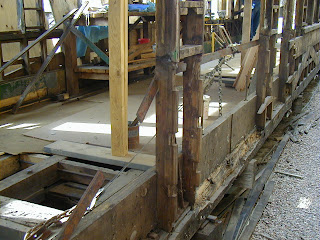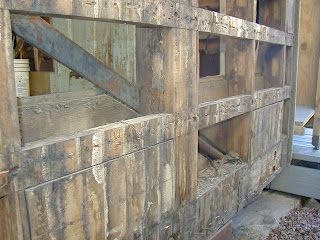It was a cool, but fortunately not very windy day to begin enclosing the ends of the shelter over our project. The east end was done first, by lifting the material up with ropes and ladders, as our rental compay is feeling the effects of the economy and unable to allow us to use the lift. The material was quite stiff from the cold, but we were able to work it up and into place with patience and persistance. At least as difficult was getting a good overlap of the top and side as it had shifted to the west and was hard to work with as well. By pulling, pushing and poking it came along, and the end result is seen on the right, above.
The ramp and boardwalk into the car on the west end required some modification as seen on the right. The rail is in place where the bottom of the end piece will be, but time, lack of daylight, and cold suggested that this will be continued next time. (Is that saw blade broken off?)





















































